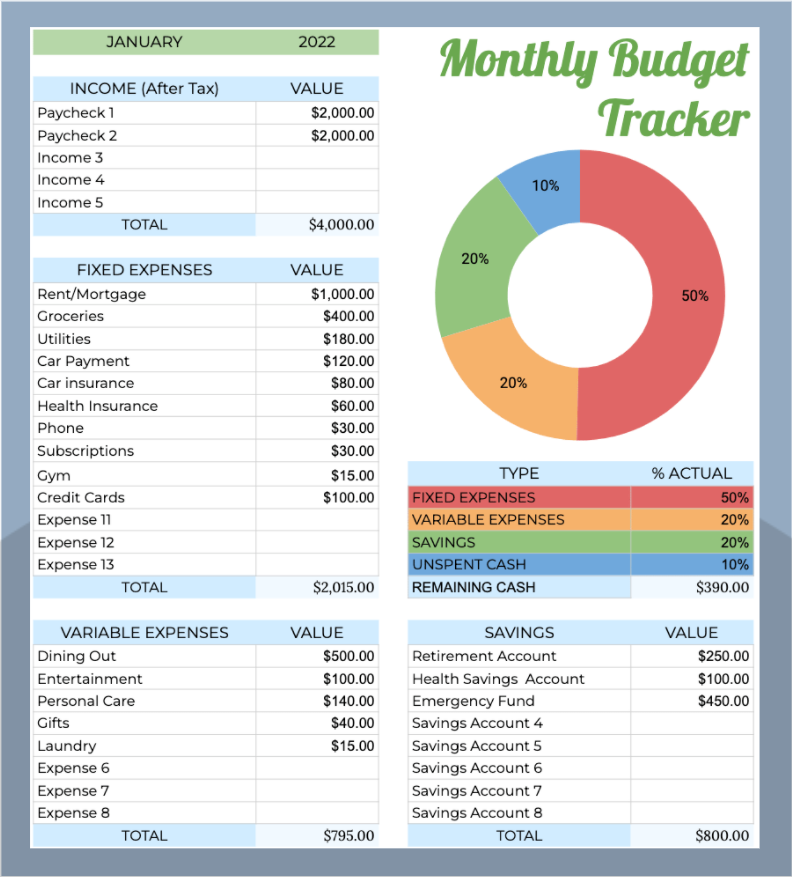Budgeting: The Art of Spending and Saving

Did you know that roughly 60% of adults in the United States are living paycheck to paycheck?
This explains why so many people can not live below their means. Their money vanishes at the end of every month because they do not assign a job to every dollar they earn. They spend without purpose.
Why Start a Budget?
The purpose of having a budget is to organize your spending into categories so you can prioritize where your cash is spent. Consequently, this helps you save money for the things that matter to you the most.
Let’s say that you have been wanting to take a trip to Europe but haven’t been able to save enough to book that plane ticket.
A budget allows you to know how much money you bring in and how much goes out. Then you can analyze those expenses and determine where you can cut out the unnecessary spending. Then, with the leftover cash, you can finally book that ticket to Europe.
The important thing to note with budgeting is to have a purpose. My purpose when I first started a budget was to have more money to invest in the stock market. Nowadays, my purpose is to save for a downpayment on a rental property.
Having a purpose will ensure that you stay true to your budget! Now, let’s explore how to start a budget that will work for you.
How to Start a Budget?
My favorite budgeting rule is the 50-30-20 rule. It's a beginner-friendly rule that states that you should allocate 50% of your income to essential spending, 30% to your needs, and 20% to your savings.
You can use my free template below to understand how much you are spending in each of the categories.

Monthly Budget Tracker Template
A simple tool to help you track your monthly spending and determine how much money to save and invest on a monthly basis.
If you find that you are spending above the recommended percentages in any of the categories, then you need to figure out where you can reduce some of the expenses. For instance, if you find that your fixed expenses exceed 50% of your income, then you can start looking at how to reduce the expenses that fall under that category.
You can call to ask for a better car insurance rate. Or you can shop around for a cheaper cell phone plan. Or you can cut out some of the monthly subscriptions. Find a way to reduce your expenses.
The main focus here is the savings category. A minimum of 20% is required, and you should aim to increase it as your income increases.
After you hit your desired savings goal, any leftover cash is yours to spend on whatever you like. Whether it is a vacation, new shoes, a fancy dinner, or anything else that you enjoy.
It's important to also enjoy spending your money after you reach your saving goals. That way, you will ensure that you continue budgeting.
Conclusion
Creating a monthly budget sets you up for success because you determine where your money should go before it is spent. It allows you to figure out how much money you should allocate for savings and how much you can afford to spend on entertainment.
Have a great week!
Muhamed
📖 Quote of the Week
If you think starting a business looks risky, you're right. It is and always will be. But I believe it's one of the best ways to make a change.
From The Minimalist Entrepreneur, by Sahil Lavingia

